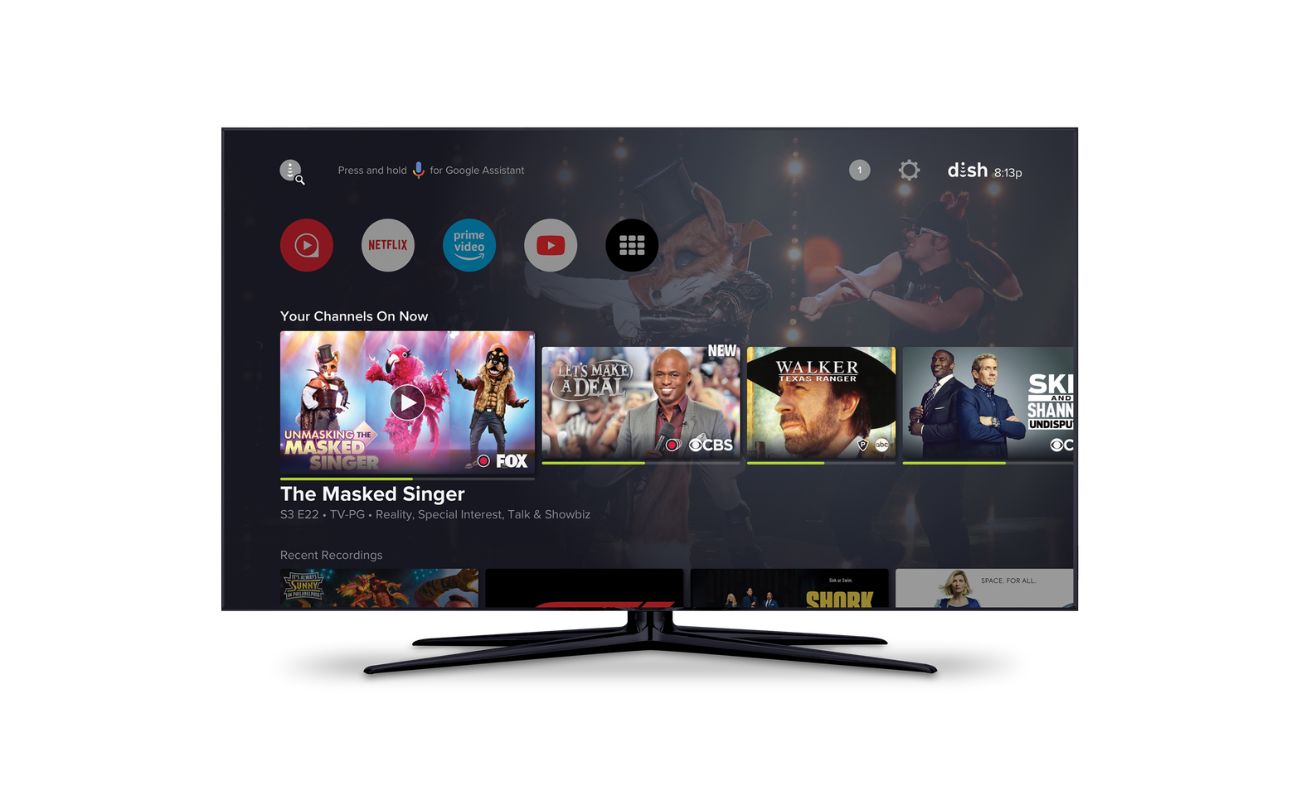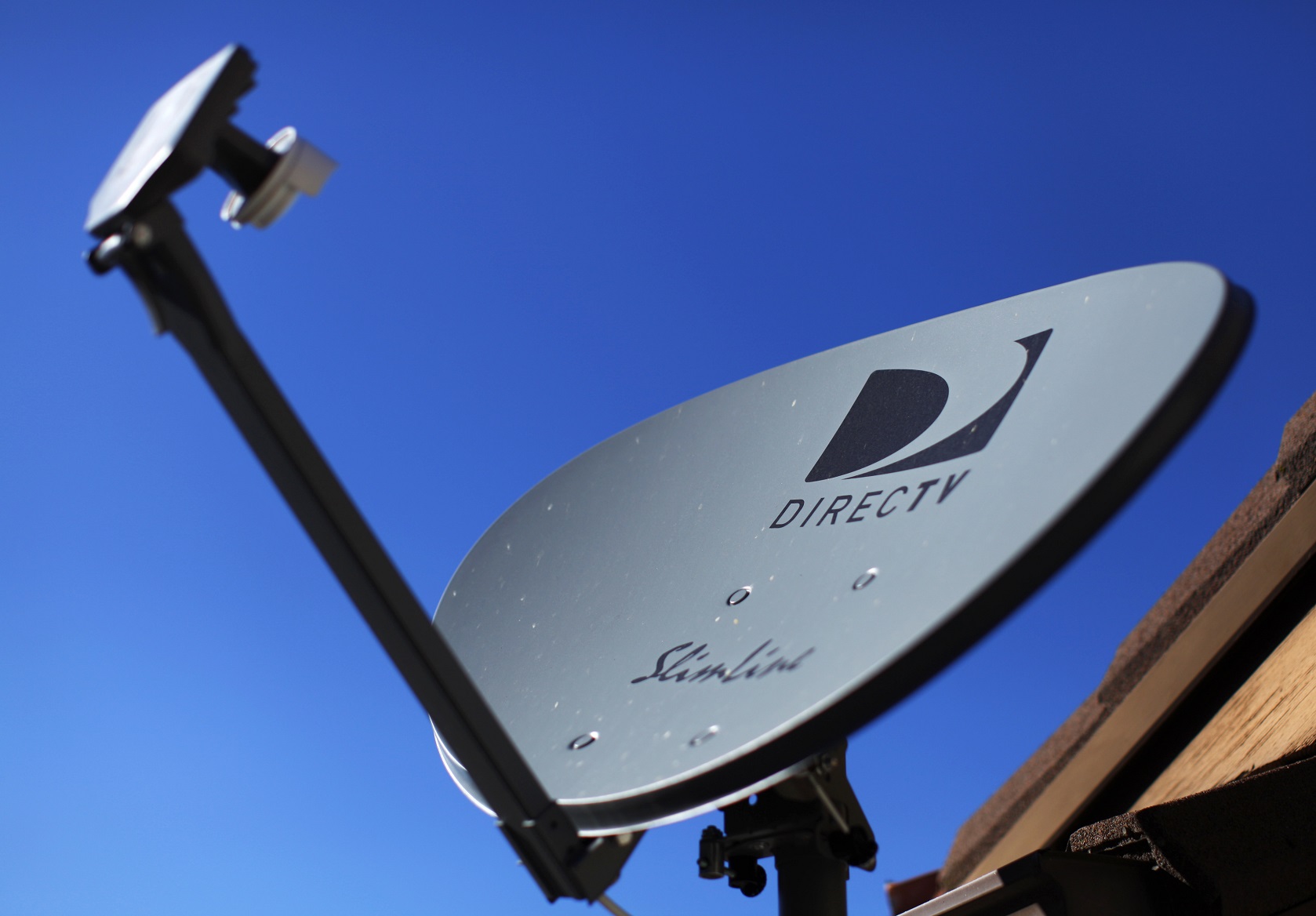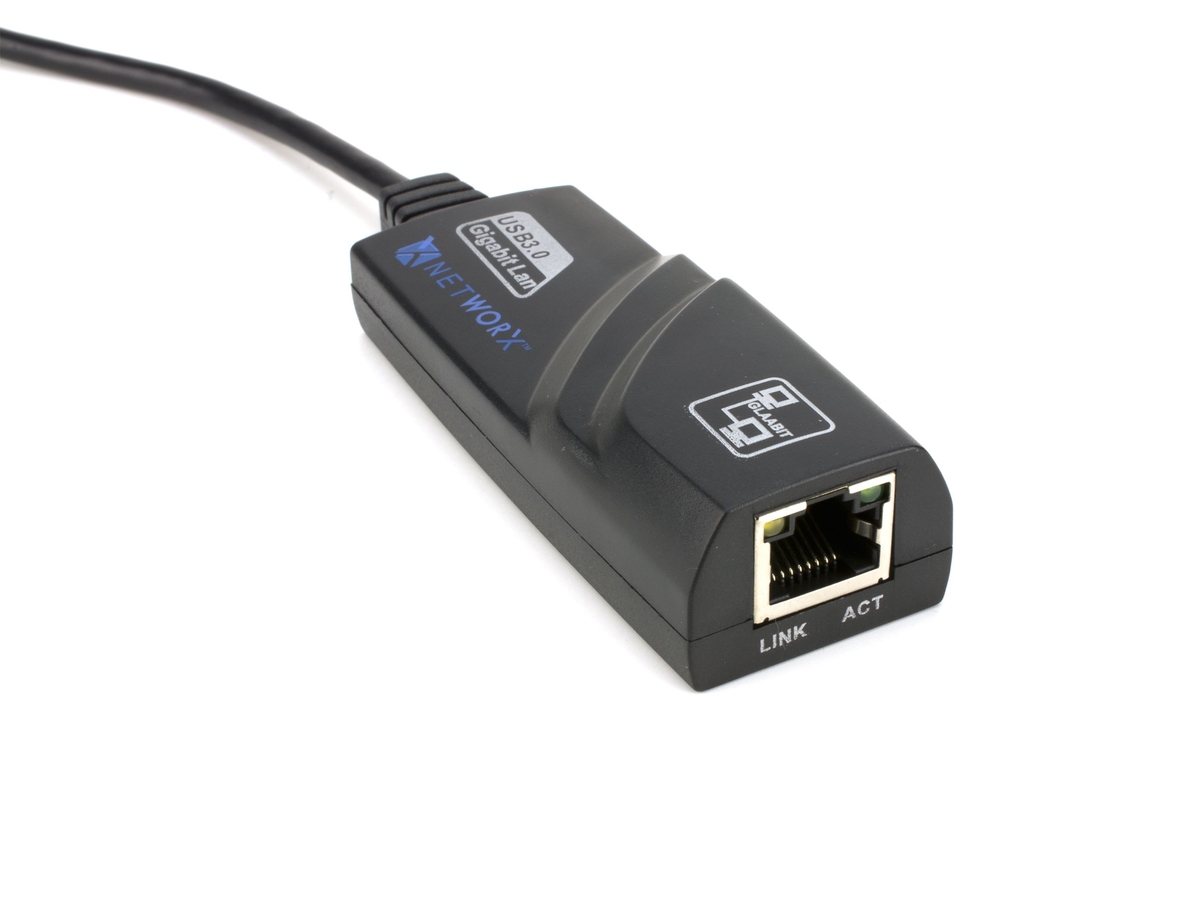Home>Technology>Home Entertainment Systems>How To Start A Television Network


Home Entertainment Systems
How To Start A Television Network
Published: December 21, 2023
Learn how to start a television network and create engaging home entertainment systems with our expert tips and comprehensive guides. Transform your space into the ultimate entertainment hub today!
(Many of the links in this article redirect to a specific reviewed product. Your purchase of these products through affiliate links helps to generate commission for Storables.com, at no extra cost. Learn more)
Introduction
So, you"ve got a vision for a television network. That"s fantastic! The world of television is a captivating realm where creativity meets technology, and where storytelling takes center stage. Whether you"re aiming to create a niche network catering to a specific audience or a broad-based channel with wide appeal, the process of launching a television network is an exciting and multifaceted journey.
Embarking on this venture requires a blend of passion, strategic thinking, and a deep understanding of the television industry. From researching market trends to securing funding, acquiring compelling content, and implementing cutting-edge technology, every step in this process is crucial to the success of your network.
In this comprehensive guide, we"ll delve into the intricacies of starting a television network, offering valuable insights and practical tips to help you navigate this dynamic industry. From the initial stages of research and planning to the eventual launch and operations, we"ll cover everything you need to know to embark on this exhilarating endeavor.
So, fasten your seatbelt and get ready to dive into the captivating world of television network creation. It"s a journey filled with creativity, innovation, and endless possibilities. Let"s embark on this adventure together!
Key Takeaways:
- Starting a television network requires understanding the industry, strategic planning, securing funding, acquiring compelling content, and implementing cutting-edge technology. It’s an exciting journey filled with creativity and innovation.
- Launching a television network involves orchestrating a captivating debut, ensuring seamless operations, and fostering ongoing innovation. It’s a visionary endeavor that intertwines creativity, technology, and strategic acumen.
Read more: What Is The CW Television Network?
Understanding the Television Industry
Before delving into the process of launching a television network, it’s essential to grasp the intricacies of the television industry. Television, as a medium, has evolved significantly over the years, transitioning from traditional broadcasting to digital streaming platforms, on-demand services, and interactive experiences. Understanding the current landscape of the industry is vital for making informed decisions and carving out a unique position for your network.
The television industry encompasses a diverse array of players, including broadcast networks, cable channels, streaming services, and production studios. Each segment contributes to the rich tapestry of content that captivates audiences worldwide. As you venture into this arena, it’s crucial to stay abreast of the latest trends, technological advancements, and consumer preferences.
Furthermore, gaining insights into audience demographics, viewing habits, and content consumption patterns is paramount. This knowledge will inform your programming decisions, helping you tailor your network’s offerings to resonate with your target viewers. Whether you’re catering to a specific niche or aiming for broad appeal, understanding the nuances of audience behavior and preferences will be instrumental in shaping your network’s identity.
Moreover, the television industry is characterized by fierce competition and rapid innovation. New players constantly enter the market, disrupting traditional models and pushing the boundaries of content delivery. This dynamic landscape presents both challenges and opportunities for aspiring network owners. By staying attuned to industry shifts and emerging technologies, you can position your network to thrive amidst the evolving entertainment ecosystem.
Ultimately, comprehending the television industry entails recognizing the convergence of content, technology, and audience engagement. As you embark on the journey of creating a television network, embracing the dynamism and diversity of the industry will empower you to chart a course that is both visionary and viable. With a firm grasp of the industry’s intricacies, you’re poised to embark on the next phase of your network-building odyssey.
Research and Planning
Embarking on the journey of launching a television network necessitates meticulous research and strategic planning. This phase serves as the bedrock upon which the entire network-building endeavor rests. Comprehensive research will provide invaluable insights into market dynamics, audience preferences, and industry trends, while effective planning will lay the groundwork for the network’s structure, content offerings, and long-term sustainability.
Research begins with a deep dive into the television landscape, encompassing both traditional and digital platforms. Analyzing viewership data, content trends, and competitive positioning will aid in identifying potential gaps or untapped opportunities in the market. This intel will inform your network’s positioning, helping you carve out a distinct identity that resonates with your target audience.
Simultaneously, understanding the regulatory and licensing requirements governing television networks is paramount. Navigating the legal and compliance aspects ensures that your network operates within the bounds of industry regulations, safeguarding its legitimacy and longevity.
Moreover, strategic planning involves delineating the network’s content strategy, programming lineup, and production approach. This entails defining the genres, formats, and themes that align with your network’s vision and audience preferences. Additionally, formulating a robust business plan, encompassing revenue models, cost projections, and monetization strategies, is pivotal for attracting potential investors and stakeholders.
Furthermore, identifying and cultivating partnerships with content creators, production houses, and distribution platforms is integral to the network’s content acquisition and delivery strategy. Building a robust network of collaborators and suppliers will fortify your content pipeline and enhance the network’s value proposition.
In essence, the research and planning phase sets the stage for the network’s entire trajectory. By meticulously gathering insights, formulating a strategic roadmap, and aligning the network’s vision with market opportunities, you’re laying a resilient foundation for the forthcoming stages of network development. This preparatory phase is not only about envisioning your network’s future but also about equipping it with the strategic acumen to thrive in the dynamic television landscape.
Securing Funding
One of the pivotal steps in launching a television network is securing the necessary funding to actualize your vision. Building and operating a television network entails substantial financial resources, encompassing content acquisition costs, production expenses, technological infrastructure, marketing initiatives, and operational overheads. Securing funding for your network demands a strategic and multifaceted approach, leveraging various sources and investment avenues.
First and foremost, crafting a compelling and comprehensive business plan is instrumental in attracting potential investors and securing financial backing. The business plan should articulate the network’s value proposition, revenue models, growth projections, and competitive differentiators. It serves as a blueprint that not only outlines the network’s strategic trajectory but also instills confidence in potential stakeholders regarding the network’s viability and potential return on investment.
Furthermore, exploring partnerships and collaborations with established production studios, content creators, and distribution platforms can yield strategic alliances that bring both content and financial support to the network. Such partnerships can manifest in co-production arrangements, content licensing agreements, or equity investments, bolstering the network’s content pipeline and financial standing simultaneously.
Additionally, seeking investment from venture capitalists, private equity firms, or media-focused investment groups presents an avenue for securing substantial capital infusion. These entities often seek innovative and disruptive ventures in the media and entertainment space, making them potential partners in realizing your network’s ambitions.
Moreover, exploring government grants, industry-specific funds, and media development programs can provide supplementary financial support and incentives for launching your network. These initiatives are designed to foster innovation and diversity in the media landscape, offering grants, tax credits, or subsidies that can alleviate the financial burden of network establishment and operation.
Ultimately, securing funding for your television network demands a blend of strategic foresight, compelling storytelling, and astute financial planning. By articulating a compelling business case, forging strategic partnerships, and tapping into diverse funding sources, you can fortify your network’s financial foundation and propel it towards a successful launch and sustained growth.
Content Acquisition and Production
At the heart of any successful television network lies its content – the captivating shows, compelling documentaries, and engaging programming that captivate audiences. As you embark on the journey of launching a television network, curating a diverse and compelling content lineup is paramount to establishing your network’s identity and attracting viewers.
Content acquisition involves sourcing and licensing a wide array of programming, including scripted series, reality shows, documentaries, films, and special events. This process entails identifying content that aligns with your network’s brand and resonates with your target audience. Whether you’re focusing on niche content catering to specific interests or aiming for broad appeal, curating a well-rounded content portfolio is essential.
Furthermore, forging partnerships with production studios, independent filmmakers, and content creators can facilitate the acquisition of original and exclusive content for your network. Collaborative ventures, co-production agreements, and content development partnerships can infuse your network with unique and compelling programming, setting it apart in a crowded media landscape.
Simultaneously, venturing into original content production can bolster your network’s identity and offer a platform for showcasing innovative storytelling and creative talent. Developing original series, documentaries, and special features not only differentiates your network but also cultivates a loyal viewership drawn to your exclusive offerings.
Moreover, investing in high-quality production values and engaging storytelling is instrumental in creating content that resonates with audiences. From script development to post-production, ensuring a seamless and captivating viewing experience is crucial for fostering viewer loyalty and positive word-of-mouth.
Additionally, embracing diversity and inclusivity in content acquisition and production can broaden your network’s appeal and cater to a wide spectrum of viewers. By curating a content lineup that reflects diverse voices, cultures, and perspectives, you can forge meaningful connections with a broad and varied audience base.
In essence, content acquisition and production form the bedrock of your network’s offerings, shaping its identity and resonating with viewers. By curating compelling content, fostering creative partnerships, and investing in original production, you’re poised to captivate audiences and carve out a distinct space in the television landscape.
Research your target audience and create a programming strategy that appeals to them. This will help you attract and retain viewers for your television network.
Read more: How To Pitch An Idea To A Television Network
Technology and Infrastructure
As you embark on the exhilarating journey of launching a television network, leveraging cutting-edge technology and establishing robust infrastructure are paramount for delivering seamless and captivating content to your audience. The convergence of content delivery, interactive experiences, and multi-platform accessibility necessitates a strategic approach to technology and infrastructure that aligns with your network’s vision and audience expectations.
First and foremost, investing in state-of-the-art broadcast and production technology is integral to ensuring the high-quality delivery of your network’s content. From high-definition cameras and studio equipment to advanced editing and post-production facilities, embracing technological innovation can elevate the visual and auditory appeal of your programming.
Moreover, as the media landscape evolves, embracing digital streaming, on-demand viewing, and interactive content experiences is essential for engaging modern audiences. Developing a robust digital infrastructure, encompassing content delivery networks, streaming platforms, and user-friendly interfaces, enables your network to reach viewers across diverse devices and platforms, enhancing accessibility and viewer engagement.
Furthermore, integrating data analytics and audience insights into your technological framework empowers you to understand viewer behavior, preferences, and content consumption patterns. Leveraging these insights can inform programming decisions, content recommendations, and personalized viewer experiences, fostering a deeper connection with your audience.
Additionally, embracing emerging technologies such as augmented reality (AR), virtual reality (VR), and interactive content formats can enrich the viewer experience and differentiate your network in a competitive landscape. Immersive storytelling and interactive features can captivate audiences and offer a unique viewing experience that sets your network apart.
Simultaneously, fortifying your network’s infrastructure to ensure seamless content delivery, redundancy, and scalability is crucial for maintaining uninterrupted operations. From broadcast transmission systems to cloud-based storage and disaster recovery protocols, a resilient infrastructure safeguards your network against technical disruptions and ensures consistent content delivery.
In essence, technology and infrastructure form the backbone of your network’s content delivery and audience engagement. By embracing innovation, fostering digital accessibility, and fortifying your technical framework, you’re poised to deliver captivating and seamless content experiences that resonate with modern viewers.
Marketing and Promotion
Launching a television network entails not only creating compelling content but also effectively promoting it to reach and resonate with your target audience. Marketing and promotion play a pivotal role in building brand awareness, attracting viewers, and cultivating a loyal audience base. Crafting a comprehensive and strategic marketing plan is essential for positioning your network in the competitive media landscape and driving viewership.
First and foremost, defining your network’s brand identity and value proposition forms the cornerstone of your marketing strategy. Articulating a compelling narrative that encapsulates your network’s mission, content offerings, and viewer benefits sets the stage for resonant and authentic marketing communication.
Furthermore, devising a multi-channel marketing approach that encompasses digital, social media, traditional advertising, and public relations initiatives maximizes your network’s visibility and reach. Leveraging diverse platforms and mediums enables you to connect with a broad and varied audience, fostering brand recognition and engagement.
Moreover, creating targeted and personalized marketing campaigns tailored to specific audience segments and viewing preferences can yield higher engagement and viewership. By understanding your audience’s demographics, behaviors, and content preferences, you can craft messaging and promotions that resonate with their interests and compel them to tune into your network.
Additionally, strategic partnerships with influencers, content creators, and media personalities can amplify your network’s visibility and credibility. Collaborative ventures and endorsements from influential figures can enhance your network’s appeal and expand its reach within relevant audience circles.
Simultaneously, fostering community engagement and interactive marketing initiatives can cultivate a loyal and participatory viewer base. Engaging audiences through interactive content, social media interactions, and user-generated content campaigns fosters a sense of community and loyalty, driving sustained viewership and advocacy.
Furthermore, measuring the effectiveness of your marketing efforts through data analytics, viewer feedback, and performance metrics is crucial for refining and optimizing your promotional strategies. Iterative refinement based on insights and performance indicators empowers you to continually enhance the impact and resonance of your marketing endeavors.
In essence, marketing and promotion are instrumental in propelling your network’s visibility, resonance, and viewership. By crafting a compelling brand narrative, leveraging diverse marketing channels, and fostering audience engagement, you can position your network for success in the competitive media landscape.
Launch and Operations
The culmination of meticulous planning and strategic execution, the launch of your television network marks the commencement of an exhilarating chapter in your media venture. From orchestrating a captivating debut to ensuring seamless operations, the launch and initial operational phase are pivotal in setting the tone for your network’s trajectory and resonating with your audience.
First and foremost, orchestrating a compelling launch event or campaign that generates buzz and captivates potential viewers is essential. Whether through exclusive premieres, engaging promotional activities, or strategic partnerships, the launch serves as a platform to showcase your network’s value proposition and content offerings, enticing audiences to tune in.
Furthermore, ensuring a seamless and captivating viewer experience during the launch phase is paramount. From user-friendly interfaces to reliable content delivery, prioritizing technical robustness and quality ensures that your audience’s initial interaction with your network is positive and enduring.
Moreover, fostering engagement and feedback mechanisms during the launch phase can provide valuable insights into audience reception, content preferences, and user experience. Leveraging viewer feedback and engagement data empowers you to refine your content strategy, programming lineup, and viewer engagement initiatives, fostering sustained viewership and loyalty.
Additionally, establishing efficient and resilient operational workflows, encompassing content scheduling, broadcast management, and audience support, is crucial for maintaining consistent and high-quality content delivery. Streamlining operational processes and fortifying technical infrastructure safeguards your network against disruptions and ensures a seamless viewer experience.
Simultaneously, nurturing and expanding partnerships with advertisers, content creators, and distribution platforms during the initial operational phase can bolster your network’s revenue streams and content portfolio. Cultivating a robust network of collaborators and stakeholders fortifies your network’s position in the industry and enhances its content offerings.
Furthermore, continually innovating and evolving your network’s offerings and viewer engagement initiatives post-launch is essential for sustaining audience interest and fostering long-term viewership. Embracing viewer feedback, industry trends, and technological advancements empowers you to adapt and enhance your network’s appeal and resonance with modern audiences.
In essence, the launch and initial operational phase represent the culmination of your network-building odyssey, marking the commencement of a dynamic and enduring media venture. By orchestrating a captivating debut, ensuring seamless operations, and fostering ongoing innovation, you’re poised to chart a course that captivates audiences and thrives in the competitive television landscape.
Conclusion
Embarking on the journey of launching a television network is a visionary and multifaceted endeavor that intertwines creativity, technology, and strategic acumen. From the initial stages of research and planning to the exhilarating launch and ongoing operations, the process of network creation is a testament to innovation, resilience, and audience resonance.
Throughout this comprehensive guide, we’ve traversed the diverse facets of network creation, delving into the intricacies of the television industry, strategic planning, content acquisition, technology integration, and audience engagement. Each phase of the network-building odyssey presents unique challenges and opportunities, demanding a blend of vision, adaptability, and operational excellence.
Understanding the ever-evolving television industry, embracing technological innovation, and curating compelling and diverse content offerings form the bedrock of a successful television network. By aligning strategic foresight with audience insights and industry trends, you can position your network to captivate and resonate with modern viewers, fostering sustained viewership and loyalty.
Moreover, navigating the complexities of securing funding, formulating a robust marketing strategy, and orchestrating a captivating launch event are pivotal in propelling your network into the spotlight and fostering a strong and enduring brand presence. Leveraging strategic partnerships, viewer engagement initiatives, and operational resilience fortifies your network’s position in the competitive media landscape, ensuring sustained relevance and resonance.
In essence, the journey of launching a television network is a testament to creativity, resilience, and strategic vision. By infusing your network with captivating content, innovative viewer experiences, and a compelling brand narrative, you’re poised to carve out a distinct and enduring space in the dynamic and ever-evolving world of television.
As you embark on this exhilarating odyssey, remember that the heart of your network lies in the stories you tell, the experiences you create, and the connections you forge with your audience. With a blend of creativity, strategic acumen, and unwavering passion, your television network has the potential to captivate, inspire, and endure in the hearts and screens of viewers worldwide.
Frequently Asked Questions about How To Start A Television Network
Was this page helpful?
At Storables.com, we guarantee accurate and reliable information. Our content, validated by Expert Board Contributors, is crafted following stringent Editorial Policies. We're committed to providing you with well-researched, expert-backed insights for all your informational needs.















0 thoughts on “How To Start A Television Network”